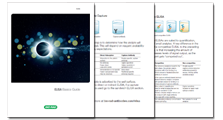ELISA and Immunoassays

- On This Page
- Overview
- Reagents
- Antibodies
- Kits
- Resources
Overview
Enzyme-linked immunosorbent assays (ELISAs) are the most common immunoassay type and used to detect the presence and measure the amount/concentration of specific analytes (e.g. antibodies) in a sample. In diagnostics, ELISAs are frequently used to determine whether and how many antibodies have been produced in response to pathogen exposure or vaccination.
The first step of an ELISA experiment is the immobilization of an antigen present in a sample to the wells of a microtiter plate. This can either be done via adsorption to the plate’s surface or by using a “capture antibody”. The capture antibody has to be specific to the adsorbed antigen and is mainly used in a specific ELISA type called “sandwich ELISA”. After immobilization, a detection antibody is added, which binds to the adsorbed antigen thereby leading to the formation of an antigen-antibody complex. The detection antibody is either directly conjugated to an enzyme, such as horseradish peroxidase (HRP), or provides a binding site for a labeled secondary antibody.
In general, ELISAs can be grouped into the four main categories (direct ELISAs, sandwich ELISAs, competitive ELISAs and dip-stick ELISAs), details of which are included in our Introduction to ELISA guide. To find out more about which ELISA set-up is best for your experimental needs, please refer to our comprehensive Guide to ELISA applications.




